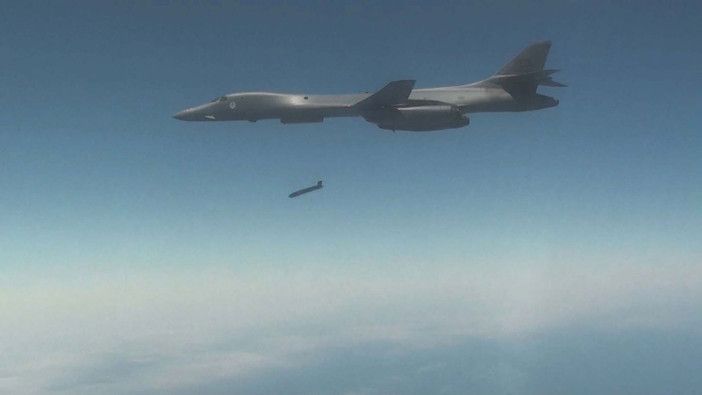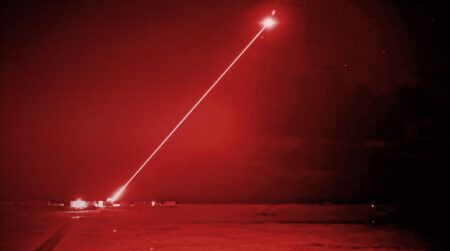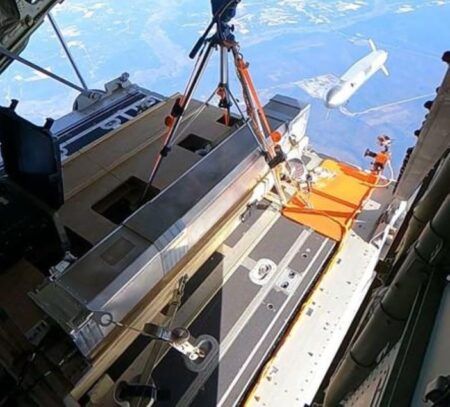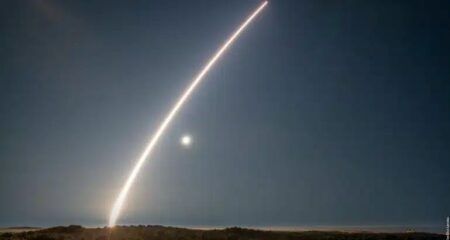Test professionals and maintainers of the 419th Flight Test Squadron from Edwards AFB in California helped the US Navy successfully test launch a new missile over the Point Mugu Sea Range on August 17, the US Air Force announced on September 20.
The test was the first free-flight launch of the Long Range Anti-Ship Missile (LRASM) from an Edwards AFB B-1B Lancer. When operational, LRASM will provide the first increment of a next-generation offensive anti-surface weapon to the warfighter. The event in August marked the first end-to-end functionality test of LRASM and proved the weapon’s ability to identify and prosecute a moving target at sea, according to the US Navy.
The LRASM is part of a rapid acquisition program began by the Defense Advanced Research Projects Agency that was later transferred to the Navy in February 2014. The missile leverages the proven performance of the current Joint Air-to-Surface Standoff Missile airframe while incorporating several unique capabilities.
“The design they based [LRASM] off was a pre-existing weapon that had been tested on a B-1B, which is why they chose that platform,” said Kevin Butler, 419th FLTS, armament project lead engineer. “Because it’s a more advanced version of a previous weapon that is already certified, you can reduce some of the testing required.”
With an operational capability slated for 2018 on the B-1B, and in 2019 for the Navy’s F/A-18 Super Hornet, developmental testing of LRASM must be done relatively quickly to meet the military’s operational need on time.
“The amount of time we usually get to execute a test like this is about a couple years, but this one was pushed down to six months,” said Elvin Colindres, 412th Test Management Group, LRASM project manager. “It was a real crunch with people working a lot of overtime.”
Butler explained having an increased number of players in the test program posed additional challenges that needed to be overcome.
Through all the learning curves, the test team were ready to make their scheduled LRASM launch from a B-1B on August 16 — until the bomber experienced an engine problem.
“The aircraft took off and had an in-flight issue. It aborted (the test mission) and came down,” said Colindres.
All tests and preparation leading up to the LRASM launch used a single B-1B from the 419th FLTS with no plan ever to use the squadron’s second Lancer for the test. Maintainers were immediately assembled and as soon as the first B-1B landed, they got to work on swapping over the missile and conducting all the preflight preparation. Something that usually takes a day-and-a-half was done within six hours, they said.
The second B-1B took off and successfully launched LRASM off the coast of California for the Navy to further conduct its test.
The Edwards test team will assist with three more developmental test launches of the LRASM in the near future.
September 27, 2017





